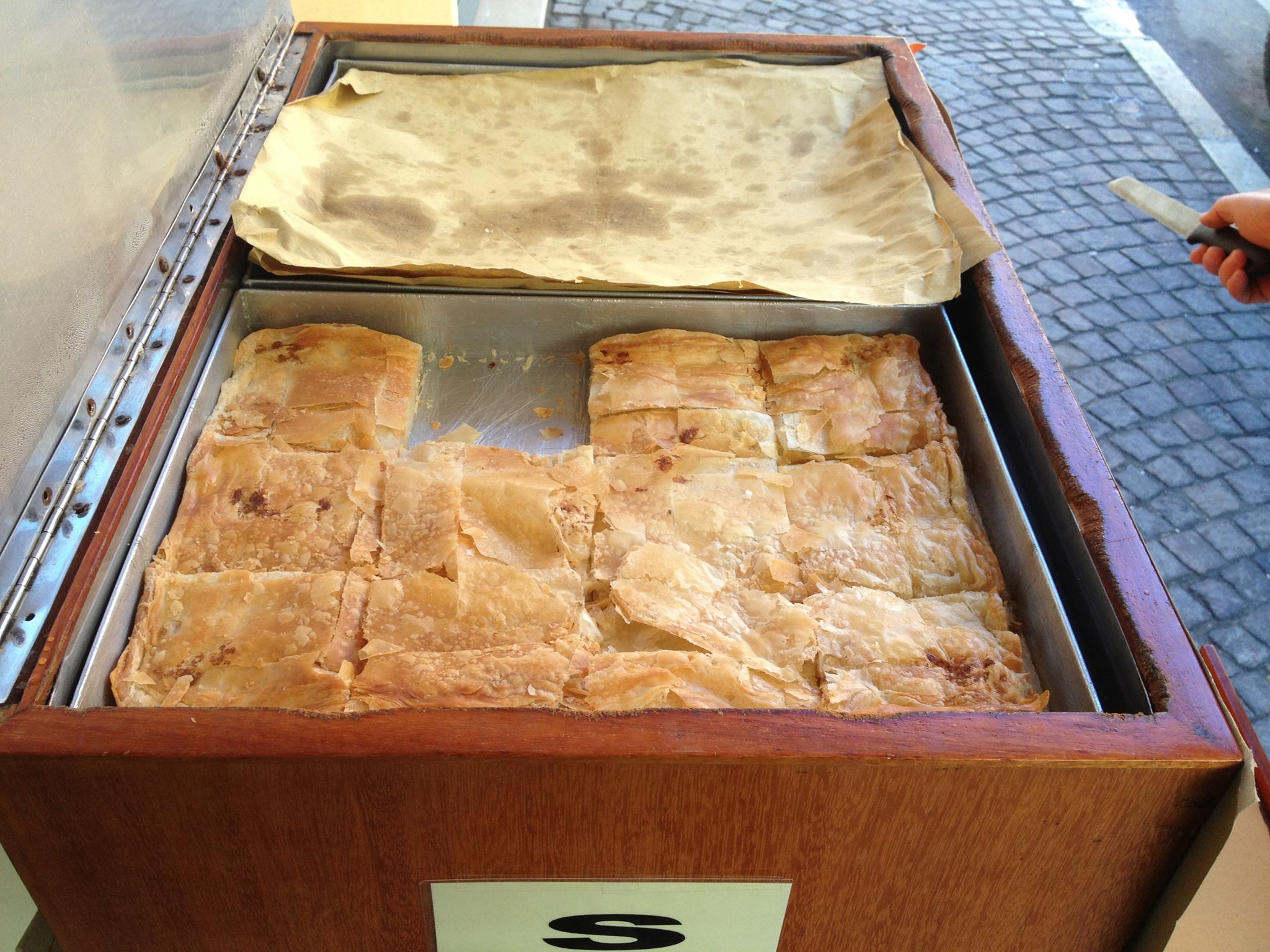La sfogliata o torta degli ebrei

Finale vanta un'elevata qualità della propria proposta eno-gastronomica: nei secoli la sua cucina tipica ha subito contaminazioni evidenti, sia perché è stata a lungo città di confine sia perché nel passato era attraversata dal fiume allora navigabile, principale via di collegamento tra Modena (e, attraverso Modena, addirittura i territori della Toscana che facevano parte dei possedimenti estensi e quindi il mar Tirreno) e il Po, passando per Ferrara e arrivando fino a Venezia. E in questo traffico di “corriere” naviganti, costituite da barche a fondo piatto, burchi e rascone (queste ultime di maggiore tonnellaggio), che portavano merci e persone, la città del Finale accoglieva persone provenienti pressoché da ogni dove: vi facevano sosta, magari mangiavano, magari davano suggerimenti a chi preparava cibarie, magari trasportavano merci, spezie e alimenti che venivano da altre regioni o altre nazioni e che venivano sperimentate dagli osti finalesi. Da altre regioni o altre nazioni, arrivavano anche gli ebrei che si stabilirono in città nella seconda metà del 1500, praticamente da quando Spagna e Portogallo iniziarono a perseguitarli a causa di un'ordinanza della regina Isabella. E agli ebrei è legata proprio la ricetta più tipica della cucina finalese: la sfogliata o, appunto, torta degli ebrei.
Curiosa la storia, ormai diventata leggenda, legata alla diffusione di questo piatto molto particolare, al di fuori dalle mura del ghetto finalese. “A farne dono ai cristiani – si legge in un celebre testo di Piero Gigli del 1974 – fu un certo Mandolino Rimini di Aronne, israelita, che nel 1861 era stato battezzato nella Chiesa Maggiore con l'imposizione dei nomi Giuseppe, Alfonso (aveva fatto la sua preparazione spirituale presso i RR.PP. Liguorini), Maria e del cognome Alinovi. Abbandonato il ghetto, gli scottava il disprezzo che gli ebrei non gli lesinavano. Come vendicarsi? Provvisto di un certo spiritaccio, ebbe una trovata che gli fruttò la notorietà e la riconoscenza. Erano gli ebrei gelosi della loro torta? Ebbene, ne avrebbe fatto una ghiottoneria per i cristiani, ma per punire gli ebrei che non potevano mangiare nulla che derivasse dal maiale, aggiunse alla ricetta lo strutto. Fu un trionfo che dopo cento anni (oggi più di centocinquanta, ndr) non accenna ancora a diminuire. Conservata calda su un trespolo con braciere, viene venduta agli angoli delle vie o sotto i portici del centro; a grandi rettangoli avvolti in carta gialla è mangiata all'aperto. Due sono i modi per affrontarla: il più spicciativo è a morsi, ma il buongustaio compie un languido rituale quasi sfogliasse una rosa dai petali morbidi. Quando la manipolazione è stata paziente e il grado di cottura esatto, la torta assume l'aspetto di una millefoglie, ma non a pellicole fragili, bensì tenerelle e sciroppate dal formaggio filante: solo la superficie deve essere rosata e croccante. Ha la sua stagione di punta: l'inverno; due tempi: la mattina e il crepuscolo; la sua kermesse: il giorno dei morti”. Oggi la torta degli ebrei è celebrata l'8 dicembre di ogni anno con la “Festa della Sfogliata” e la distribuzione di assaggi gratuiti accompagnati da un bicchierino di anicione, tipico liquore locale a base di anice.
Nella foto in alto, una teglia di sfogliata sul tipico trespolo che consente di mantenerla calda (foto Maurizio Goldoni).
Sotto, la locandina della prima edizione della Festa della Sfogliata che si celebra l'8 dicembre.

Finale boasts high-quality food and wine: over the centuries, its traditional cuisine has been clearly influenced by other cultures, both because it has long been a border town and because in the past it was crossed by a river that was then navigable, the main route connecting Modena (and, via Modena, even the territories of Tuscany that were part of the Este possessions and therefore the Tyrrhenian Sea) and the Po, passing through Ferrara and reaching Venice. And in this traffic of navigating ‘couriers’, consisting of flat-bottomed boats, barges, and rascone (the latter of greater tonnage), which carried goods and people, the city of Finale welcomed people from almost everywhere: they stopped there, perhaps to eat, perhaps to give suggestions to those who prepared food, perhaps to transport goods, spices, and food that came from other regions or other countries and were tried out by the innkeepers of Finale. Jews also arrived from other regions and countries and settled in the city in the second half of the 1500s, practically from the time when Spain and Portugal began to persecute them due to an ordinance issued by Queen Isabella. The most typical recipe of Finale cuisine is linked to the Jews: sfogliata or, indeed, torta degli ebrei (Jewish cake). The story behind the spread of this very particular dish outside the walls of the Finale ghetto has become legendary. “It was given to Christians as a gift,” reads a famous text by Piero Gigli from 1974, "by a certain Mandolino Rimini di Aronne, an Israelite who, in 1861, was baptized in the Chiesa Maggiore with the names Giuseppe, Alfonso (he had undergone spiritual preparation with the RR.PP. Liguorini), Maria, and the surname Alinovi. Having left the ghetto, he was stung by the contempt that the Jews did not spare him. How could he take revenge? Being somewhat mischievous, he came up with an idea that earned him notoriety and gratitude. Were the Jews jealous of their cake? Well, he would make it a delicacy for Christians, but to punish the Jews, who could not eat anything derived from pigs, he added lard to the recipe. It was a triumph that, after a hundred years (now more than 150, ed.), shows no sign of waning. Kept warm on a stand with a brazier, it is sold on street corners or under the arcades in the city center; wrapped in yellow paper, it is eaten outdoors. There are two ways to eat it: the quickest is to take bites, but gourmets perform a languid ritual, almost as if they were peeling a rose with soft petals. When handled patiently and cooked to perfection, the cake takes on the appearance of a mille-feuille, but not with fragile layers, rather soft and syrupy with melted cheese: only the surface should be golden brown and crispy. It has its peak season: winter; two times of day: morning and dusk; its festival: All Souls' Day. Today, the Jewish cake is celebrated on December 8 each year with the “Festa della Sfogliata” (Feast of the Puff Pastry) and the distribution of free samples accompanied by a glass of anicione, a typical local anise-based liqueur.
